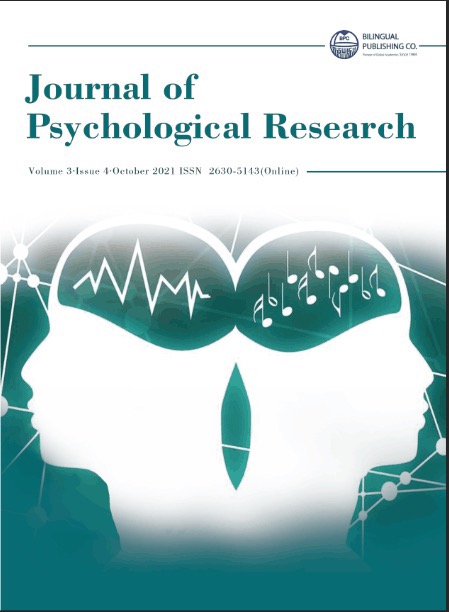-
567
-
505
-
347
-
335
-
329
Literature Review of Measurements of Personality Traits across Cultures
DOI:
https://doi.org/10.30564/jpr.v3i4.3838Abstract
After more than one century’s exploration from academia, both researches and measurements related to human personality traits have been fully developed with the effort of many researchers. Big Five, as one of the most popular assessments for personality traits, was formed based on the etic approach assuming there should be a universal or generalizable measurement for personality traits across cultures. However, with the increasing impact from different cultures as well as in-depth understanding from researchers, more doubts of etic approach on measuring personality were proposed. Emic approach stressing the significance of specific-cultural method in anthropological research has been accordingly investigated. The following Big Six and Big Seven scales were constructed under this approach. These measurements were already examined to have higher validity and reliability on measuring personality traits when implementing in the relevant group of people. Therefore, this study was supposed to give a literature review summarizing the definition process towards personality traits, the specific content and development of the mentioned measurements using etic and emic approach, the measurement issues based on the relevant researches, and some further considerations for etic and emic approach in assessing personality traits
Keywords:
Personality traits; Big Five; Etic approach; Emic approach; Big Six; Big SevenReferences
[1] Kajonius, P., & Mac Giolla, E. (2017). Personality traits across countries: Support for similarities rather than differences. PloS One, 12(6): e0179646.
[2] Church, A. T. (2010). Current perspectives in the study of personality across cultures. Perspectives on Psychological Science, 5(4), 441-449.
[3] Cheung, F. M., van de Vijver, F. J., & Leong, F. T. (2011). Toward a new approach to the study of personality in culture. American Psychologist, 66(7), 593.
[4] Feher, A., & Vernon, P. A. (2021). Looking beyond the Big Five: A selective review of alternatives to the Big Five model of personality. Personality and Individual Differences, 169, 110002.
[5] McAdams, D. P., & Pals, J. L. (2006). A new Big Five: fundamental principles for an integrative science of personality. American Psychologist, 61(3), 204.
[6] Van de Vijver, F. J., Leung, K., & Leung, K. (1997). Methods and data analysis for cross-cultural research (Vol. 1). Sage.
[7] Benet, V., & Waller, N. G. (1995). The Big Seven factor model of personality description: Evidence for its cross-cultural generality in a Spanish sample. Journal of Personality and Social Psychology, 69(4), 701.
[8] McCrae, R. R., Zonderman, A. B., Costa Jr, P. T., Bond, M. H., & Paunonen, S. V. (1996). Evaluating replicability of factors in the Revised NEO Personality Inventory: Confirmatory factor analysis versus Procrustes rotation. Journal of Personality and Social Psychology, 70(3), 552.
[9] Marsh, H. W., Lüdtke, O., Muthén, B., Asparouhov, T., Morin, A. J., Trautwein, U., & Nagengast, B. (2010). A new look at the big five factor structure through exploratory structural equation modeling. Psychological Assessment, 22(3), 471.
[10] Harzing, A.-W. (2006). Response styles in cross-national survey research: A 26-country study. International Journal of Cross-Cultural Management, 6(2), 243-266.
[11] Ashton, M. C., & Lee, K. (2007). Empirical, theoretical, and practical advantages of the HEXACO model of personality structure. Personality and Social Psychology Review, 11(2), 150-166.
[12] Gaughan, E. T., Miller, J. D., & Lynam, D. R. (2012). Examining the utility of general models of personality in the study of psychopathy: A comparison of the HEXACO-PI-R and NEO PI-R. Journal of Personality Disorders, 26(4), 513-523.
[13] Almagor, M., Tellegen, A., & Waller, N. G. (1995). The Big Seven model: A cross-cultural replication and further exploration of the basic dimensions of natural language trait descriptors. Journal of Personality and Social Psychology, 69(2), 300.
[14] Gurven, M., Von Rueden, C., Massenkoff, M., Kaplan, H., & Lero Vie, M. (2013). How universal is the Big Five? Testing the five-factor model of personality variation among forager-farmers in the Bolivian Amazon. Journal of Personality and Social Psychology, 104(2), 354.
[15] Osterlind, S. J., & Everson, H. T. (2009). Differential item functioning. Sage Publications.
[16] Terracciano, A., Abdel-Khalek, A. M., Adam, N., Adamovová, L., Ahn, C. -k, Ahn, H. -n, Alansari, B. M., Alcalay, L., Allik, J., & Angleitner, A. (2005). National character does not reflect mean personality trait levels in 49 cultures. Science, 310(5745), 96- 100.
[17] Boyle, G. J., Matthews, G., & Saklofske, D. H. (2008). The SAGE Handbook of Personality Theory and Assessment: Personality Measurement and Testing (Vol. 2). Sage.
[18] Vandenberg, R. J., & Lance, C. E. (2000). A review and synthesis of the measurement invariance literature: Suggestions, practices, and recommendations for organizational research. Organizational Research Methods, 3(1), 4-70.




 Kexin Jiang
Kexin Jiang





